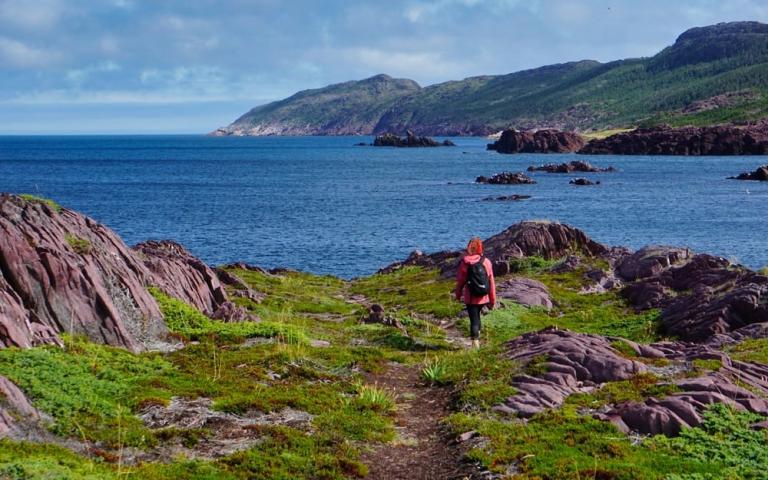Voyageur au Canada - Our crossing with Marine Atlantic: the start of a 30-day road trip in Newfoundland
Christine and Stéphane, founders of VoyagerauCanada.com, have been exploring Canada for nearly 30 years.
Specialists in road trips, they design customized itineraries and share their best tips for discovering the country.
Having fallen in love with Newfoundland from the moment they saw their first iceberg, they created a reference guide to the province, an essential resource for exploring Newfoundland.
This article has been translated from French to English. To read the original article, click here.
The crossing: the first chapter of an unforgettable road trip
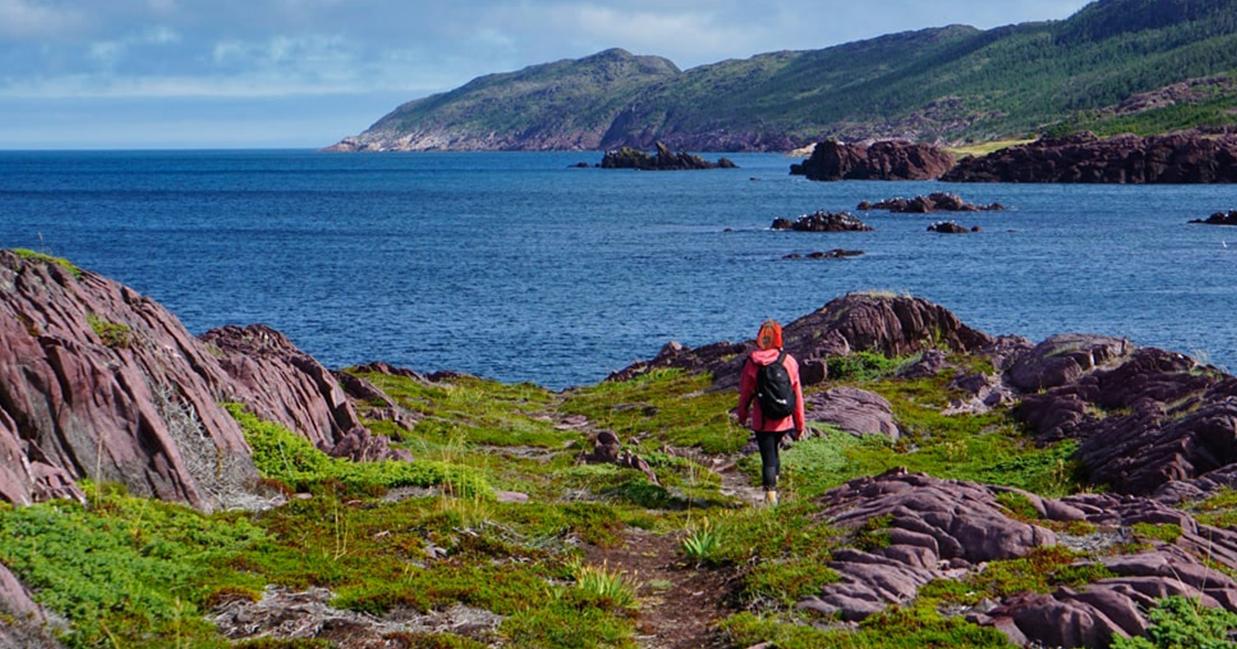
Landing in Newfoundland isn’t like crossing a border.
Here, you have to take to the open sea.
And this sea passage isn’t just a means of transport: it’s the first chapter of the journey. Before the craggy capes, small fishing ports and puffin encounters, there’s that suspended moment: the crossing to Newfoundland.
We climb aboard, sit by the porthole with a cup of coffee and a good book, and watch the land disappear. The journey is beginning. For real.
In early September 2024, we left the Laurentians for a 37-day road trip, including 30 days in Newfoundland. An exploration of the nooks and crannies of this fascinating province. This was not our first trip to Newfoundland (it was number seven), but the most recent, before returning in 2026 (via the Labrador route).
And this time, a surprise awaited us on board the ferry...
In the following lines, we tell you about our experience aboard the brand-new Ala’suinu ferry to Argentia. We’ve chosen to tell you about this crossing precisely because it’s handled by this new ship.
We’re also sharing our favourites from the road and a few useful tips for all those who dream of discovering this island we can’t seem to stay away from.
Our experience aboard Marine Atlantic’s ferries
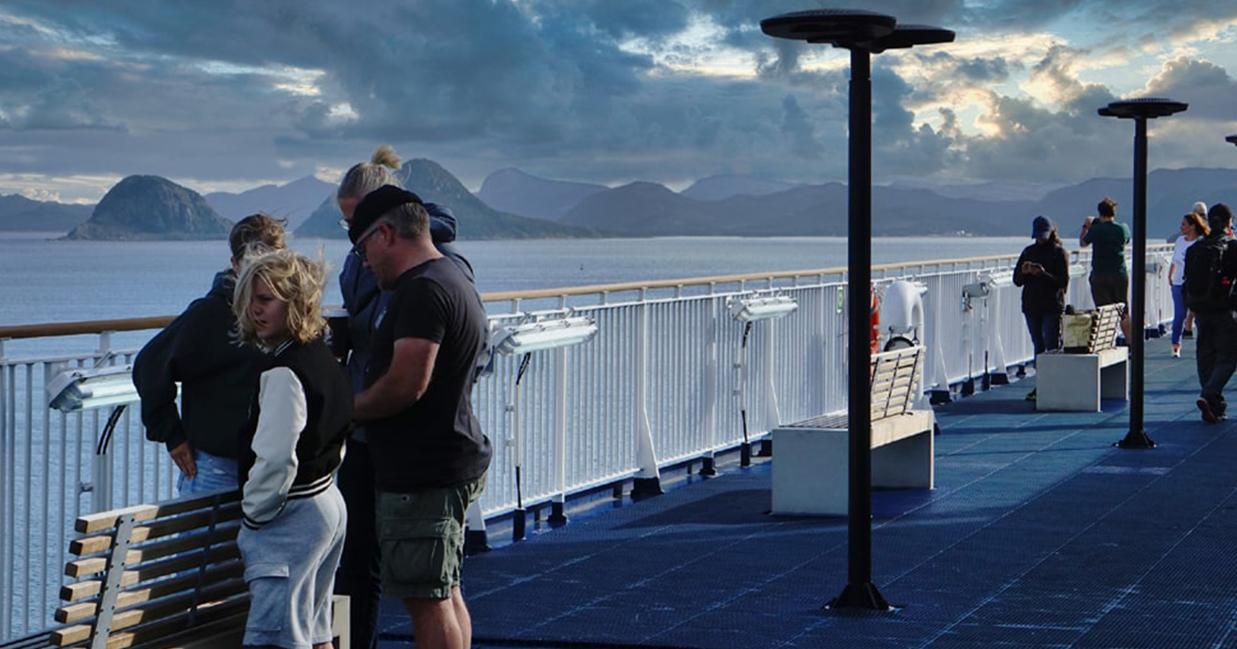
We often tend to think of the ferry as a simple link between two shores. But here, it’s much more than that.
Marine Atlantic is part of the journey, right from the moment we board.
And with its brand-new vessel, the Ala’suinu, which links North Sydney to Argentia in 16 hours, the crossing to Newfoundland becomes a real experience in itself.
In terms of comfort, we’ve come a long way from the old ferry that smells of French fries.
On board the Ala’suinu, everything is designed to make your crossing a pleasant experience... even a little floating luxury.
For the return trip, we opted for the day crossing between Port aux Basques and North Sydney (7 hours). Once again, everything went smoothly: smiling staff, smooth organization and a relaxed atmosphere.
And since we’re two tourism pros with a sharp eye, we can tell you straight out: Marine Atlantic is a serious, reputable and reliable company. A key player in these vital crossings to Newfoundland.
And no, this is not an advertorial: we didn’t get a check, a free cruise or a box of dried cod. We just want to tell you about a really good experience.
Cabin or no cabin? Our opinion after 16 hours on board
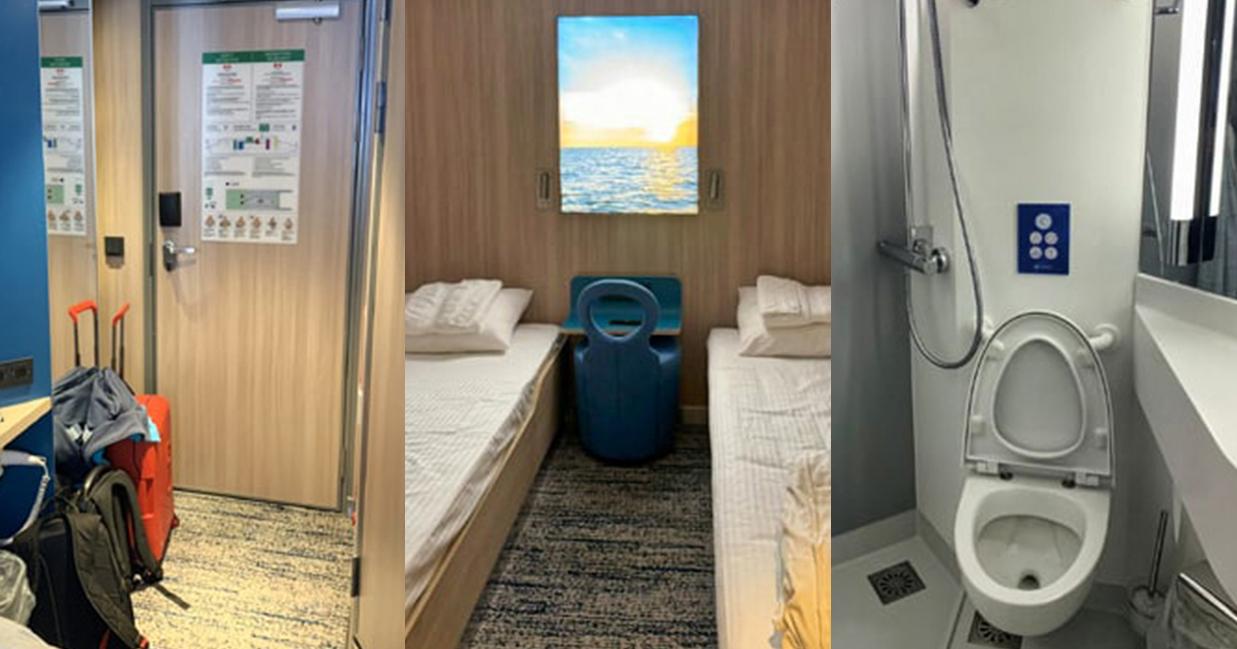
I’ll start with the surprise.
We had booked our overnight crossing between North Sydney and Argentia, but there were no more cabins available. We put ourselves on the waiting list without really thinking anything would come of it.
Once on board, after we’ve settled into our armchairs, ready to spend the night as best we could, we hear our name over the loudspeakers barely ten minutes later.
The lady who hands us the cabin key, all smiles, tells us that it’s always worth signing up for the waiting list. Nice surprises happen more often than you think.
A cabin had opened up. Hooray! Luck is on our side. The trip is off to a good start.
And a bonus: we’re on board the brand-new Ala’suinu ferry, launched in June 2024. On this modern, comfortable ship with good soundproofing and beautiful decor, we were able to sleep like royalty, so much so that we almost missed arriving at the dock!
The cabins are well thought out, highly functional and very well equipped. And the huge selection of streaming movies is amazing! A real cozy little nest (and maybe the anti-seasickness pills also helped us get a good night’s sleep.)
And if you’re the kind of person who snores like a bear, I really recommend getting a comfortable, soundproof cabin (everyone who spends the night on the armchairs will thank you).
Food service: simple, good and cheerful
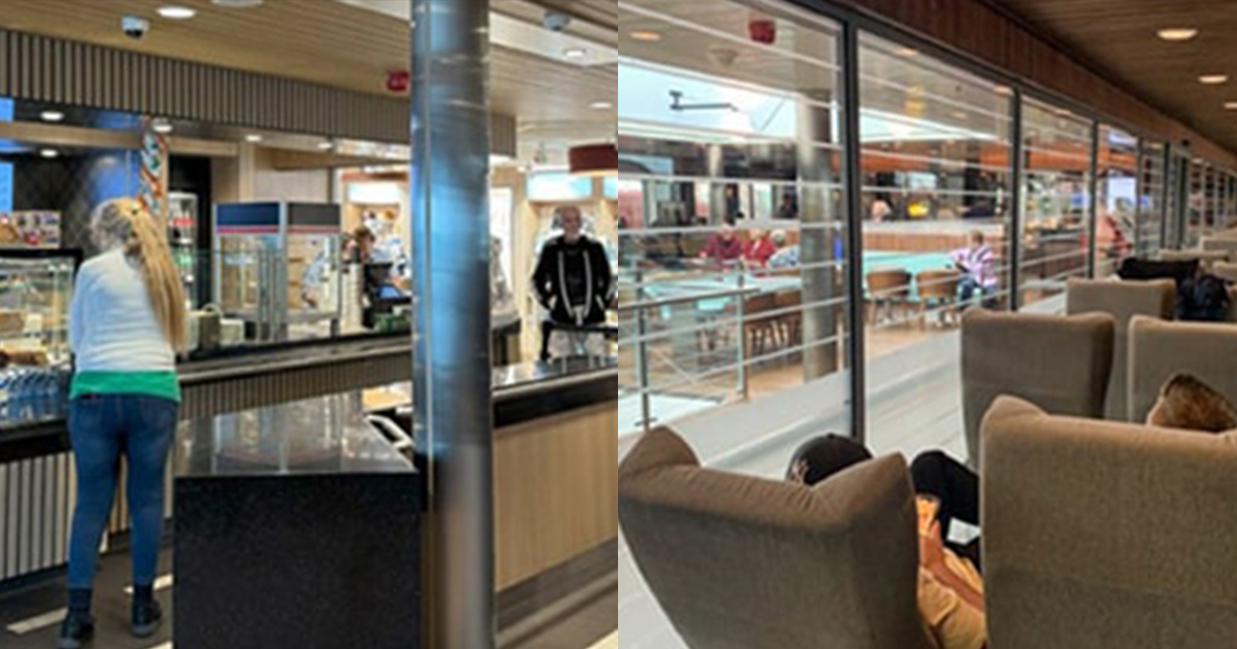
We tried out the on-board restaurant: lots of choices (we went for the fish & chips), good quality, efficient, smiling and pleasant staff. Sure, it’s a little more expensive than on land, but that’s to be expected.
Eating on board is part of the experience.
You can also find a café and a bar. In short, whether you’re feeling peckish or starving, there’s plenty to satisfy you on board the ferry.
A shop and Indigenous decor
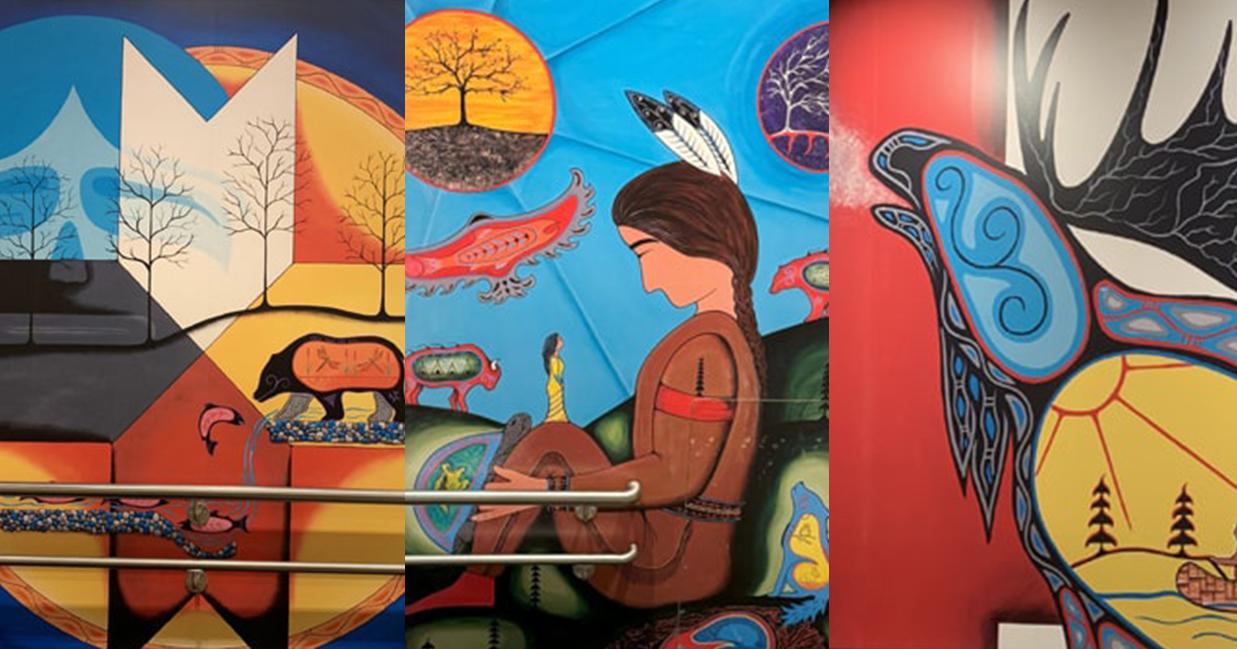
There is a small shop on board for last-minute forgotten items, emergency sweets or souvenirs.
But what we really appreciated was the ship’s decor: superb works by Indigenous Mi’kmaw artists adorn the walls. The works are beautiful, subdued and elegant, giving the boat a real personality.
In fact, the ship’s name “Ala’suinu” means “traveller” in Mi’kmaw.
What you need to know before boarding the Ala’suinu ferry
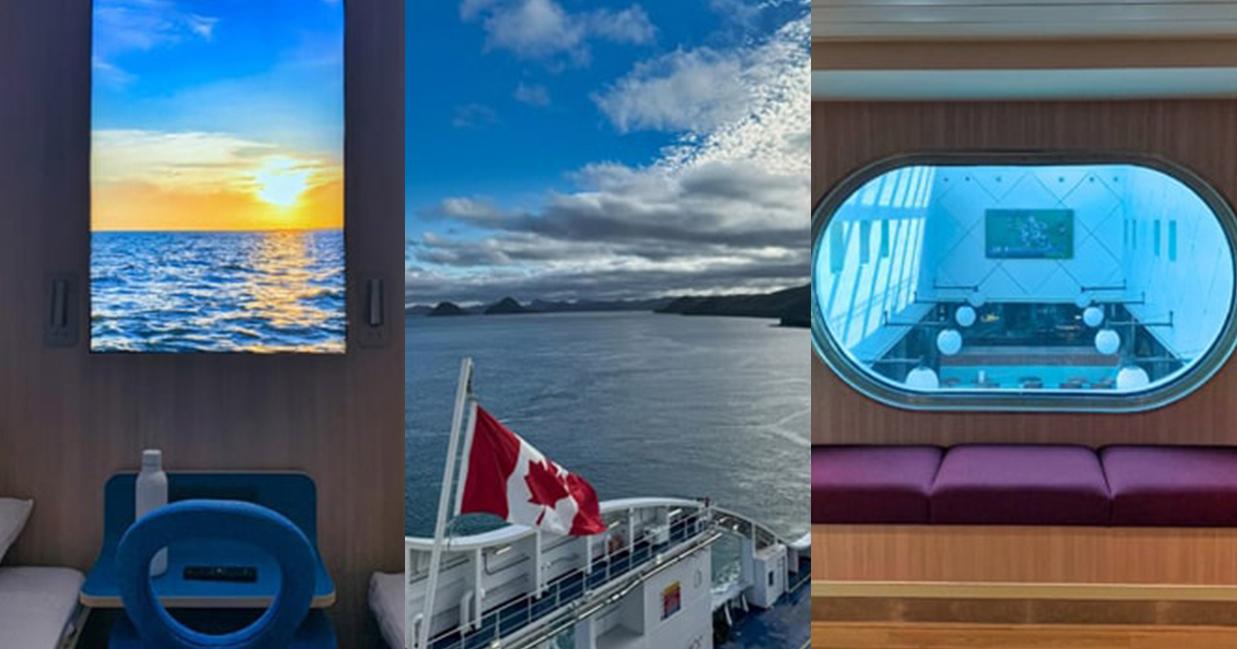
We booked directly on Marine Atlantic’s simple and efficient French-language website. Everything is clearly laid out, and you can choose your ferry, your cabin, and even check availability in real time. In short, no headaches.
As there were no more cabins available for our date, we called to get on the waiting list. And then there was the pleasant surprise of finding a polite, helpful adviser who spoke French! It’s not every day you feel such a nice welcome on the other end of the phone.
Conclusion and tips for the Ala’suinu ferry
We highly recommend this overnight crossing to Argentia. It takes you right to the east of the island, rested and ready to enjoy your first day, which changes everything.
And frankly, we were surprised by the quality of the cabin (standard category) on the Ala’suinu: quiet, comfortable, functional.
We had a wonderful experience on board the ferry, with top-quality service and friendly staff.
Finally, here are seven useful tips for your crossing:
1. Book early, very early
In summer, crossings fill up quickly. Book as soon as your dates are set, especially if you’re aiming for Argentia (seasonal and operating three days a week) and travelling by RV or with a pet.
2. Arrive early
Marine Atlantic requires you to arrive at least two hours before departure.
I’d even recommend getting there a little earlier. Before most of the crowds.
3. Prepare your board bag
Once parked, you will no longer be able to access your vehicle. Remember to take:
- snacks and bottled water,
- warm clothing (air conditioning on board = guaranteed chills),
- medicines, electronics, important documents,
- pillow, small blanket, eye mask, earplugs…
4. Cabin or armchair?
I’ve talked about this before, but in a nutshell:
- The armchairs recline... but they’re still chairs.
- A cabin (for a fee) offers a shower/toilet, a bed and peace and quiet. If you want one: book fast. They go like hotcakes.
5. Travelling with a dog?
Book a pet-friendly cabin early: they’re few and far between, and in high demand. Other options: kennels on board (limited space) or leave your dogs in the vehicle (not recommended for a 16-hour crossing). Full details are on the Marine Atlantic website.
6. Plan for the unexpected
Fog, wind or mechanical failure can delay or cancel a crossing.
Stay on top of your e-mails and leave some room in your itinerary.
7. Safety on board with an RV
- Close all gas/propane cylinders (mandatory).
- Carefully store anything that could shift around.
The crossing to Newfoundland is already the start of the voyage.
The better prepared you are, the more relaxed you’ll be.
And if everything is well thought out in advance, you’ll even have the luxury of enjoying the salty wind, the soothing roll of the waves, or the sunrise over the Atlantic.
Our 30-day Newfoundland road trip in a nutshell
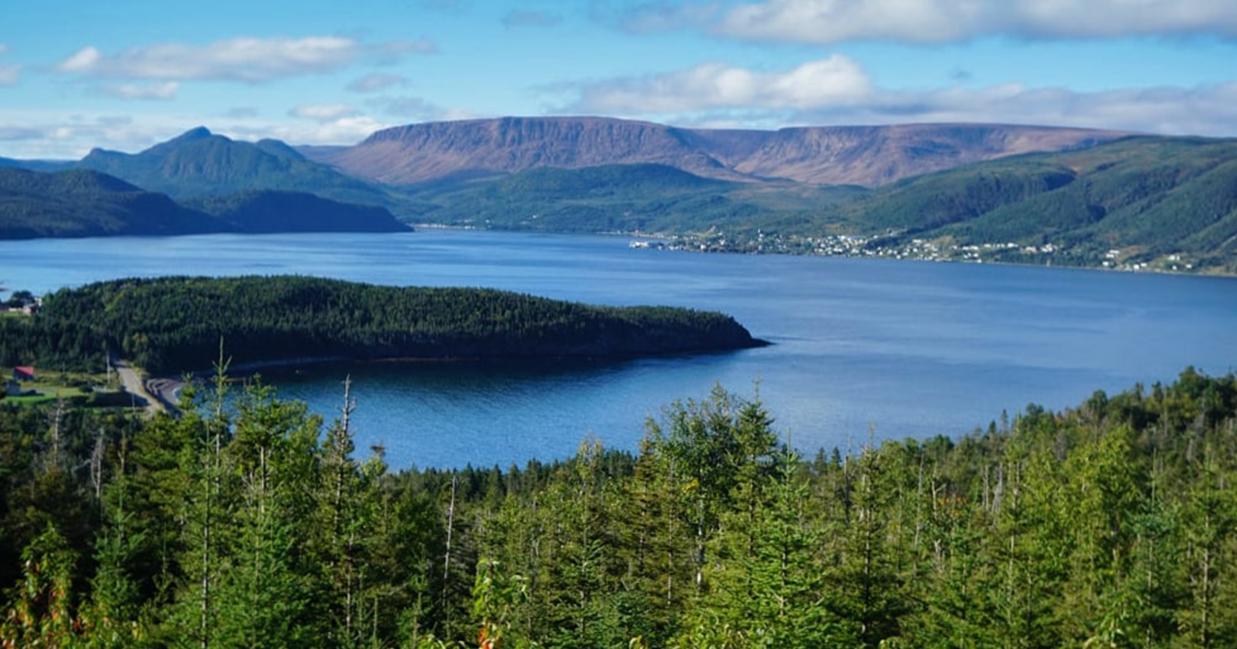
A month exploring the nooks and crannies of Newfoundland, from east to west, taking the time to circumnavigate the peninsulas, getting lost along the way, curious to find nuggets worthy of exploration. From fishing villages to rugged coastlines, the spectacular scenery of beautiful Newfoundland rolled out before us. What a trip!
Here’s a glimpse of our road trip to give you an idea of the pace, the distances, and the kind of adventure that awaits you if you dream of following in our footsteps.
Summary of the key elements of our 30-day trip
- Travel package: our car + accommodation
- Access by ferry with Marine Atlantic from North Sydney
- Overnight crossing to Argentia (east)
- Daytime return crossing from Port aux Basques (west)
- 30 days / 29 nights in Newfoundland, from east to west
- 3 days for the trip from Ste-Agathe-des-Monts (Laurentians, QC) to North Sydney (Nova Scotia)
- 4-day return trip from North Sydney with a little detour via the Cabot Trail in Nova Scotia
- Over 4,000 km for the 30 days in Newfoundland
A brief aside, because you may be thinking that 30 days is a lot, given that it’s “only” 900 km between St. John’s and Port aux Basques. In fact, we thought we would cover fewer kilometres, but there are so many coasts and peninsulas to discover that we pushed our exploration to the nooks and crannies.
Itinerary of our 30-day road trip in Newfoundland
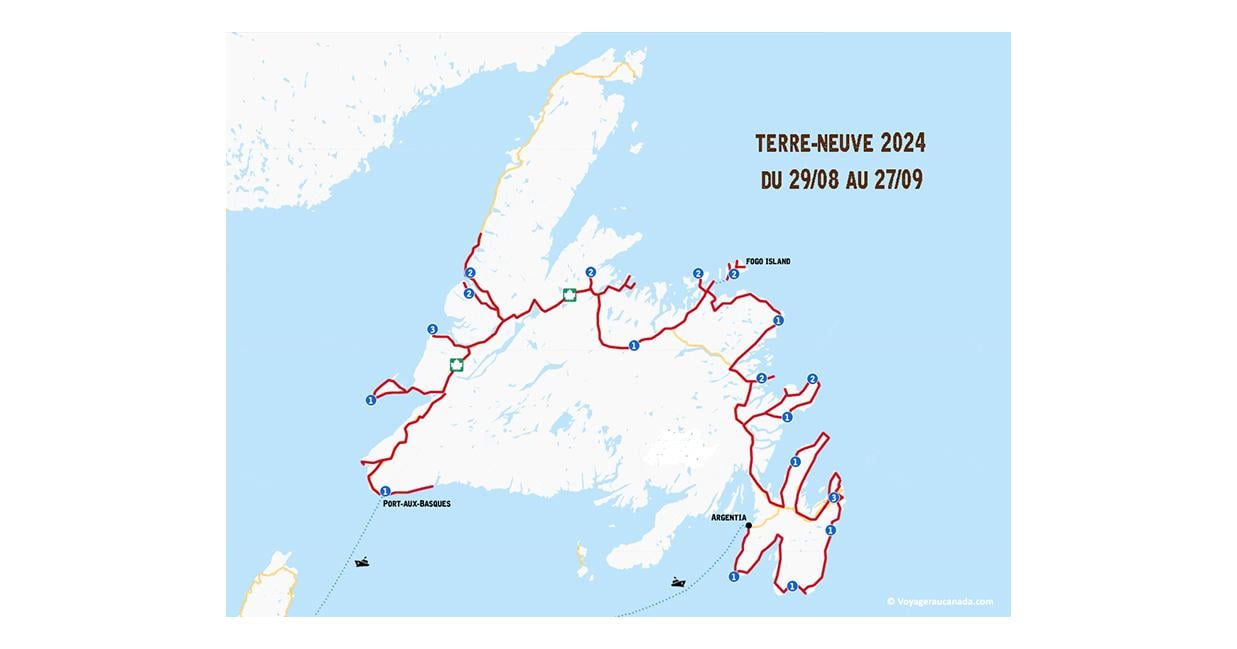
And here’s the day-by-day itinerary showing where we had our 29 overnight stays:
1 night Ste-Bride’s (Avalon Peninsula)
1 night Trepassey (Avalon Peninsula)
1 night Bay Bulls (Avalon Peninsula)
3 nights St. John’s (Avalon Peninsula)
1 night along the Baccalieu Coastal Drive (Avalon Peninsula)
1 night Trinity (Bonavista Peninsula)
2 nights Bonavista (Bonavista Peninsula)
2 nights Eastport Peninsula (Terra Nova Park, Salvage...)
1 night Newport (Kittiwake Coast)
2 nights Fogo Island
2 nights Twillingate
1 night Grand Falls-Windsor
2 nights Baie Verte Peninsula (King’s Point area and Triton/Brighton area)
2 nights Gros Morne National Park north sector
2 nights Gros Morne National Park, south sector
3 nights Lark Harbour (Bay of Islands)
1 night Cape Saint George (Port au Port Peninsula)
1 night Port aux Basques
We decided not to go to the end of the Great Northern Peninsula this time but will come back during iceberg season. Perhaps in the spring of 2026, via the Labrador route (project under consideration). And we didn’t return to the Burin Peninsula and Saint Pierre and Miquelon either, since we wanted to have time to explore other places.
📍To see the route of our 30-day itinerary in Newfoundland, click here!
Could we have changed some of the stops?
At the end of the trip, we asked ourselves: if we had to do it all over again, would we change some of the stops in our journey?
We both answered the same way: we’re delighted with our itinerary!
And if we’d had two or three more days, we would have spent more time at Fogo Island and Gros Morne Park.
Our top five picks from our Newfoundland road trip
With so much to see and do in Newfoundland it’s hard to choose, but some regions impressed us more than others.
Whether for their spectacular scenery, unique atmosphere or unexpected encounters, these five places left a lasting imprint on our memory.
If you don’t have enough time to see it all, start here: these are sure-fire must-sees.
Gros Morne National Park: exceptional!
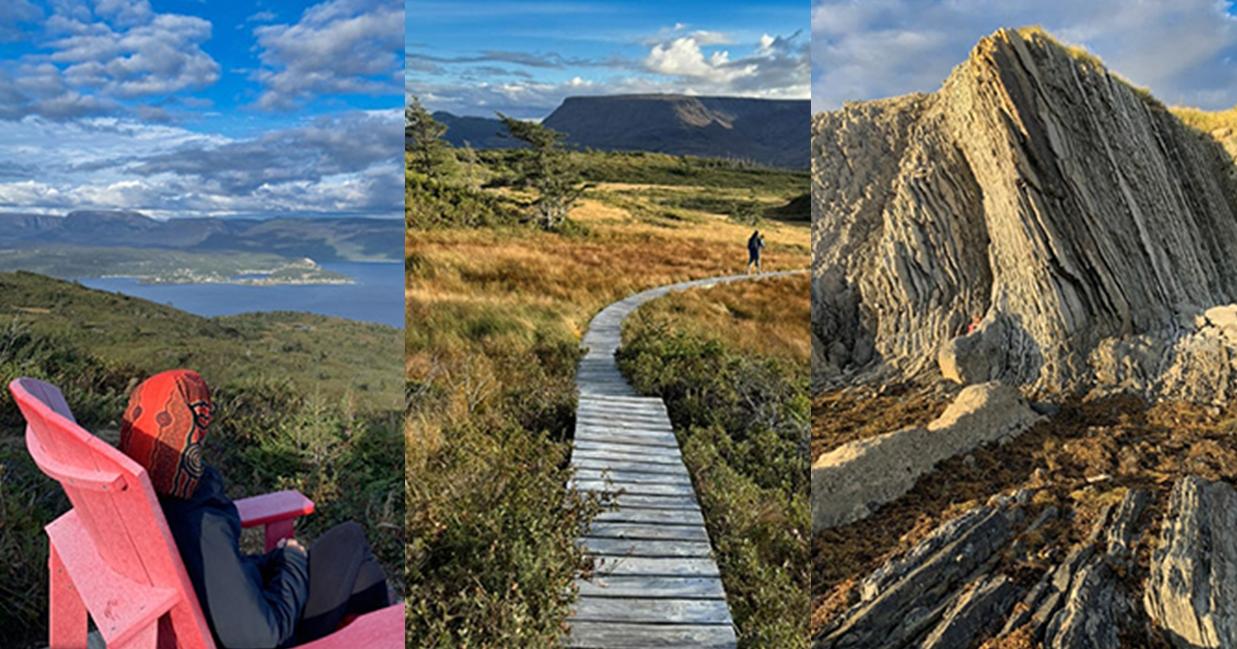
This one is a gem. The kind of place you’ll return to time and time again... and where every turn reminds you why you fell in love with Newfoundland in the first place.
The park is spectacular and varied, with fjords, rugged mountains, coastal trails and boreal forests. The scenery changes every day.
Of course, the star hike is the Mont Gros Morne trail, the park’s giant at 806 m (second-highest peak in Newfoundland after Mont Lewis at 814 m).
There’s no shortage of beautiful trails with breathtaking views in the park, and the Lookout Trail is our favourite. It’s truly spectacular!
Check out my top five most beautiful hikes in Newfoundland for photos of this hike.
The park is vast, with a one-hour drive between the northern and southern sectors.
To make the most of it, I recommend that you divide your nights between the two locations:
Two or three nights in the northern sector (Rocky Harbour, Norris Point): legendary hikes like Gros Morne Mountain, fjord cruises at Western Brook Pond, superb coastline... With a particular focus on the geological site of Green Point at sunset. Incredible play of textures and colours in the rock.
Two or three nights in the southern sector (Woody Point, Trout River): lunar atmosphere of the Tablelands, panoramic views from the Lookout Trail, cliffs at Green Gardens, scenic route 431, etc.
To sum up, I’d advise spending at least four days (four or five nights) in the park, moving from one area to another, to make sure you don’t miss out on any of the park’s beauty.
Fogo: the bewitching island
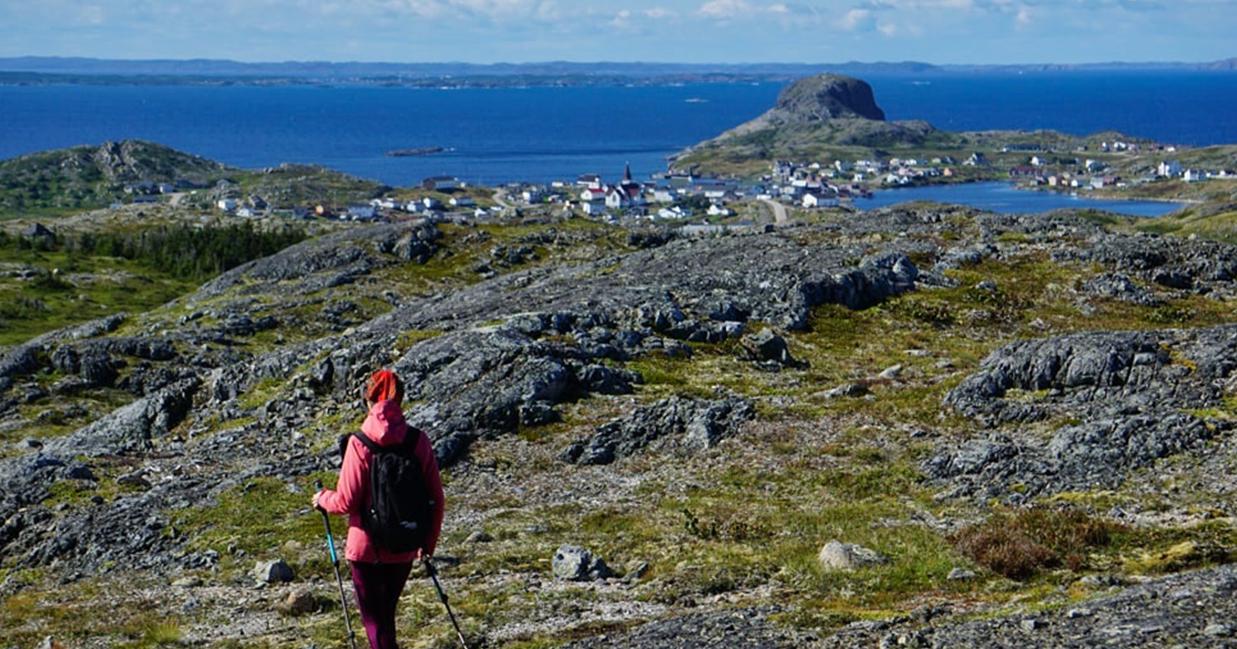
It’s impossible not to fall under the spell of this corner of the world.
Fogo is an island apart. Isolated, untamed, inspiring... it knows how to play hard to get, because you can only reach it by ferry.
As soon as you arrive, you’re under its spell. The colourful houses, the boats, the landscapes: everything seems to have been here forever.
And yet, along the way, surprising touches of modernity emerge.
Like the four contemporary art studios that stand like sculptures on the landscape. They are part of the Fogo Island Arts project, which welcomes artists in residence from all over the world.
Just looking at them, you can’t help but be amazed by their spectacular design and placement.
The same contrast can be seen at the Fogo Island Inn. Perched high in the hills, with its bold design and stilted facade, it attracts the curious... even if the price of a room far exceeds the budget of the vast majority of travellers (and there’s a three-night minimum).
Fortunately, the guided tour of the hotel is free and well worth a visit! The story of the hotel is extraordinary, and it’s also the story of the whole community.
But Fogo is more than just scenery. It’s an island that invites contemplation: slow down, observe, walk and breathe. And you feel as though you’re exactly where you should be.
Our favourite trails include Lion’s Den (our number one pick), Brimstone Head and the Great Auk Trail (it was magical at sunset).
And as if that weren’t enough, there are the people: welcoming, generous, funny.
We’re thinking in particular of the lady at the tourist centre: on top of her knowledge and invaluable advice, she was a ray of sunshine as soon as we stepped off the ferry.
Add to that great restaurants, memorable ice creams and a simple, light-hearted way of life, and you’ll understand why we recommend spending at least two nights on the island.
Don’t be like the two ladies who got to the information centre at the same time as us and asked: what can you do on the island in four hours?
Bonavista Peninsula: History and Nature
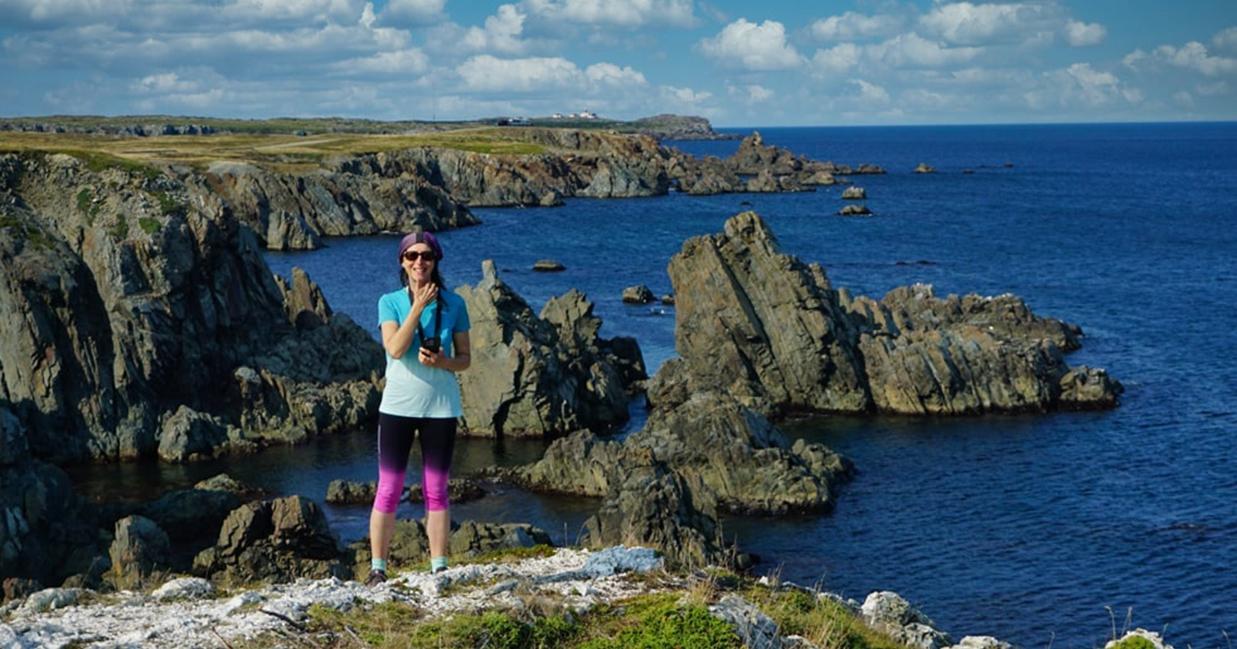
A peninsula that smells of sea breeze, raw rock... and puffins just a few metres away.
Here, nature isn’t kidding around. It’s the real thing. Crashing waves, immense skies, geological curiosities and seabirds, all punctuated by colourful villages where it seems time has decided to slow down.
Our top picks?
- Cape Bonavista and its red-and-white lighthouse defying the ocean.
- The geological sites of Spillars Cove (The Chimney) and Tickle Cove (Sea Arch), perfect for feeling tiny in a giant setting.
- The village of Trinity, with the famous Skerwink Trail next door: a spectacular (but accessible) hike along the cliffs, offering breathtaking views of the sea and rock formations.
It’s exhausting smiling in amazement all the time. But you get used to it.
The peninsula is rich in attractions, so we recommend spending several days here.
Baccalieu Coastal Drive: scenic route and hidden treasures
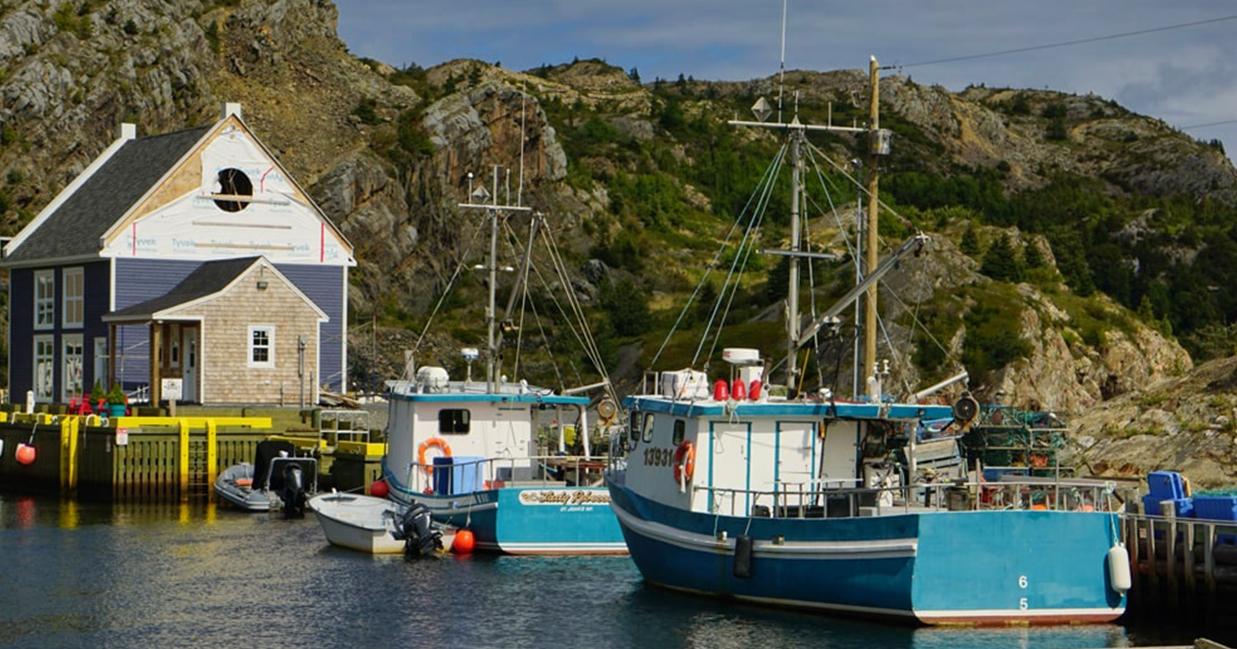
A detour that should be mandatory.
A loop of raw happiness, punctuated by picturesque villages, breathtaking coastal scenery and the authenticity that makes Newfoundland so charming.
Here are our three favourite stops:
Brigus, a postcard village
From the moment you arrive, you’ll be charmed by the scenery: heritage houses in bloom, stone-lined streets, a small port...
Here you can visit the home of Captain Bob Bartlett, hero of the Arctic expeditions.
And at the beginning of August, the Blueberry Festival: three days of music, blueberry specialties and lively village life.
Bay Roberts
15 minutes from Brigus.
We loved the Shoreline Heritage Walk, which offers 5 km of pure pleasure along the sea: cliffs, coves, sculpted rocks and a gourmet break at the Mad Rock Café.
In town, don’t miss the Cable Building (museum + art gallery), a witness to the history of transatlantic communications.
An authentic and engaging stopover, between raw nature and local culture.
Grates Cove, world’s end, golden light
With its perch in the north, the village of Grates Cove feels like it’s at world’s end.
Its jagged coastline, historic stone walls and golden sunsets make it a place suspended from time, perfect for slowing down.
Our walk to the lookout above the village at sunset remains one of the most beautiful memories of the trip. A magnificent moment, calm, golden, unforgettable.
And between these stops?
Stretches of road with varied landscapes: cliffs, forests, deserted bays... the Baccalieu Coastal Drive is Newfoundland in miniature: wild, lively, unforgettable.
The Irish Loop: plentiful attractions
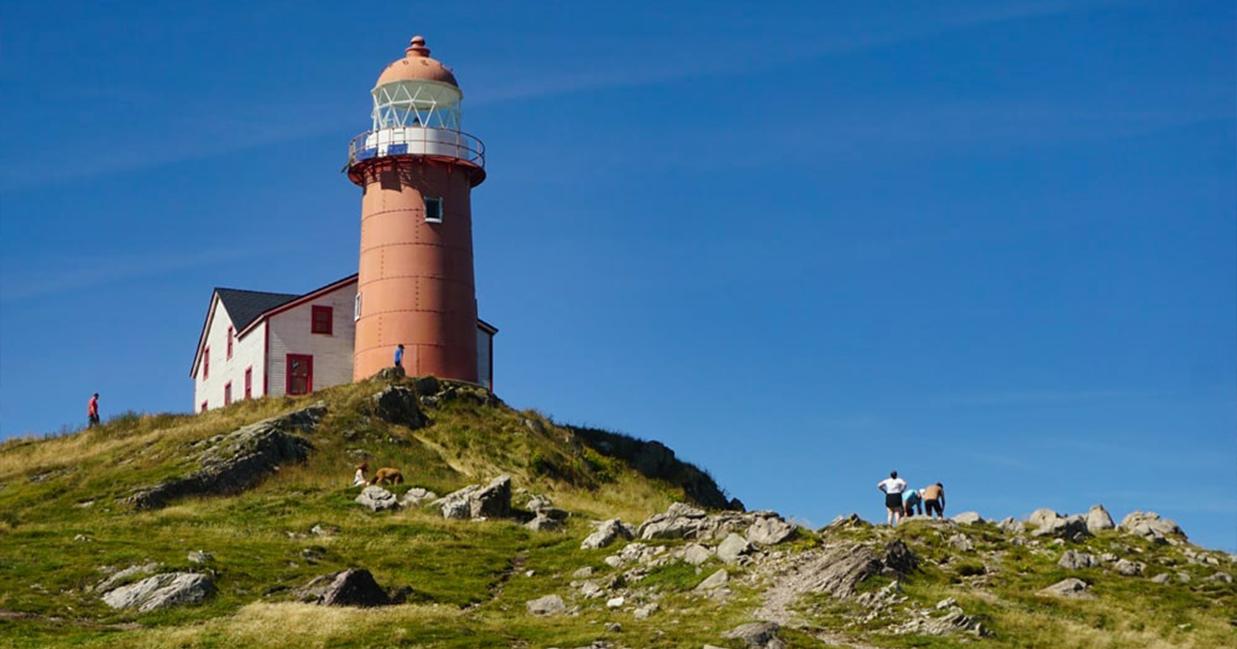
For around 300 km, the Irish Loop takes you around the south-east of the Avalon Peninsula. It’s a route rich in natural attractions, historic sites and unforgettable vistas.
Not to mention great wildlife-watching opportunities, including whales and the famous puffins.
Its name comes from the first settlers who came from Ireland in the 17th century, whose influence can still be felt in the villages, accents, traditions and even on some of the green-white-and-pink flags you pass along the way.
What we like:
- The scenery is ever-changing: steep cliffs, barrens as far as the eye can see, secret coves, coastal paths and ocean panoramas to make even the most hurried among us slow down.
- Wildlife viewing is spectacular: whales, puffins, seals and caribou. Special mention for Witless Bay Ecological Reserve, home to the largest puffin colony in North America. And for St-Vincent’s Beach, where whales can be seen very close to the beach.
- The incredible site of Mistaken Point, a UNESCO World Heritage Site. All the details of this activity and photos in our article.
- The East Coast Trail runs along much of the route and leads to natural wonders.
- The traces of history are there: in Ferryland, the remains of a 17th century settlement are still being excavated. And at Cape Race, we discover the place where the Titanic’s S.O.S. was received in 1912.
And at the beginning and the end of the road...
St. John’s, a colourful, vibrant capital perched on the eastern edge of the continent.
Here, everything extends the pleasure of the road trip: colourful houses, lively pubs, scenic trails and Cape Spear, Canada’s easternmost point.
Plan at least three nights at this stop: there’s plenty to do in town, hiking, museums and good restaurants.
And we’ve come full circle.
Newfoundland is full of extraordinary places, and it takes time to discover all four corners of the island. Here’s an article where I share my 12 must-haves and a well-kept secret.
The rest of the adventure begins here
You’ve planned your itinerary, booked your ferry, packed your bag... Now all you have to do is get on board.
A huge island awaits you. Wild, welcoming and full of surprises.
Endless roads, breathtaking climbs, and that exhilarating feeling of being away from it all, but in exactly the right place.
Christine and I are tourism professionals with a passion for Canada and Newfoundland in particular, and we created voyageraucanada.com for one simple reason: to help travellers organize their own road trips in Canada.
A successful road trip is a great vacation and a precious day in the life of a traveller.
On our site, we share essential information, tips from the field, and lots of little secrets you won’t find anywhere else.
And for beautiful Newfoundland, we’ve put it all into a 580-page digital guide that you can take with you on your tablet, phone and computer.
It’s the best kind of travel companion: it won’t snore or get lost and knows the most beautiful corners of the island.
Discover our Newfoundland RV guide (two routes East + West)
Wishing you a wonderful trip to Newfoundland!


